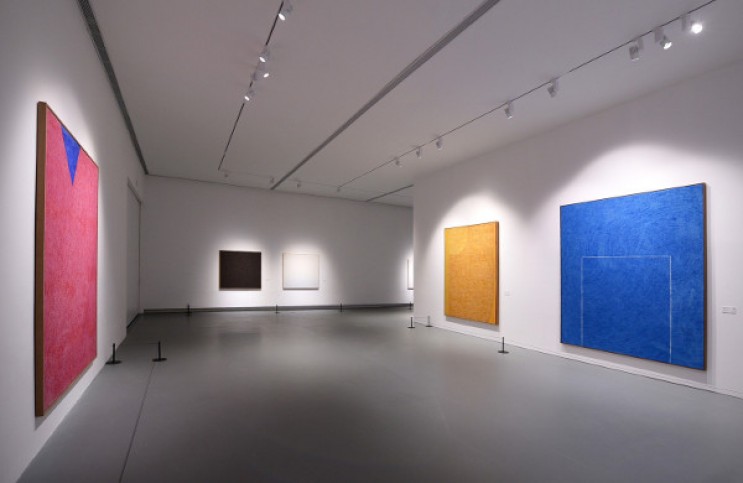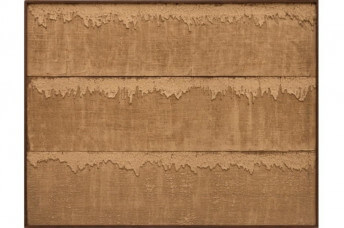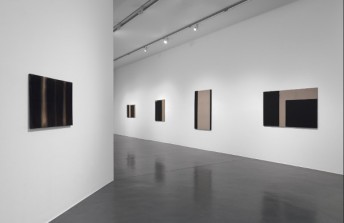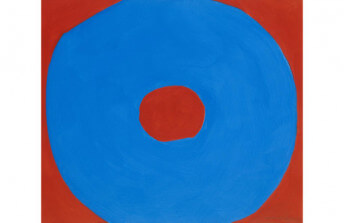How Kim Whanki Pioneered Abstract Art in Korea
Dec 21, 2018
For the first time in generations it seems possible that North and South Korea might unify as one nation. To mark this important historical moment, The Powerlong Museum in Shanghai, China, recently opened “Korean Abstract Art: Kim Whanki and Dansaekhwa.” The exhibition is intended to introduce Chinese audiences to Korean abstract art trends from the past century. Many international audiences are already familiar with Dansaekhwa, the art movement referenced in the sub-title of the exhibition. Founded in Korea in the mid-1970s, it has come to represent the height of contemporary Korean abstract painting. Dansaekhwa loosely translates as monochrome. Dansaekhwa artists employ natural processes and materials to create forms and images that evoke connections to nature. Their work is not always monochromatic; rather it is muted, simplified, and expresses the essence of just one or two hues. Yet even viewers who are already familiar with Dansaekhwa are likely far less familiar with Kim Whanki, the artist on which the other half of this exhibition focuses. Kim died in 1974, just as Dansaekhwa was becoming established, but he is considered the father of abstract art in Korea. His aesthetic development was intricately tied to the development of the modern Korean culture: both began under the influence of the Japanese; both struggled to find an authentic voice; then finally, in the late 1960s and early 70s, both began to become self-assured. Kim Whanki is important as an artist and also as a cultural pioneer. His efforts as a painter and educator helped convince Koreans that abstraction could become part of their national heritage, and that they could create a confident, modern, abstract aesthetic voice all their own.
Becoming Korean
The question of what a modern, unified, independent Korea might look like is up in the air. Yet this has also been the case for the better part of the last century. Few people alive today are even old enough to remember a time when Korea was not either controlled by a foreign power or separated into warring republics. Kim Whanki was born in 1913, just three years after Korea was annexed by the Empire of Japan. When he began to seriously focus on art, he did not study in Korean schools. He was sent by his family to Tokyo where he earned his degree from the College of Arts at Nihon University. Thus, his first exposure to modern art trends was not rooted in Korean tradition, but rather in the international trends popular at the time in Tokyo, such as Cubism and Futurism since many of the most influential Japanese art instructors had traveled to Europe and personally learned from some of the artists who helped pioneer those styles.
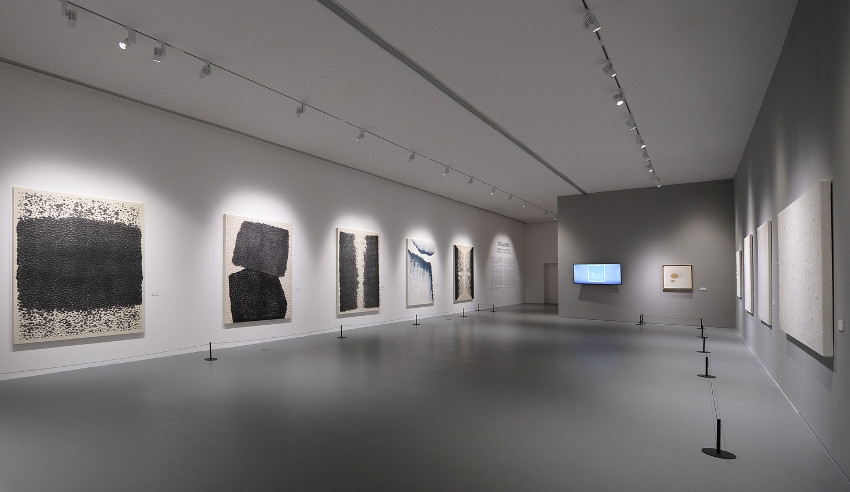
Korean Abstract Art: Kim Whanki and Dansaekhwa. Nov 8, 2018 - Mar 2, 2019. Powerlong Museum. Installation view. Photo courtesy Kukje Gallery.
This is why when we look back at the earliest works Kim painted they seem influenced by European abstraction more than by historic traditions of either Korea or Japan. But that all changed when Kim returned to Seoul in 1938. There he befriended members of the Korean literary and artistic elite and for the first time immersed himself in the studious appreciation of Korean aesthetic history. The most profound influence he discovered was the look and feel of traditional Korean earthenware. In particular, he found abstract beauty and significance in the Moon Jar, a type of ancient porcelain vessel renowned for subtle inconsistencies in shape, which lend a sense of imperfect beauty. Kim made multitudinous studies of Korean jars, sometimes making figurative drawings and paintings of their images, other times employing their shapes, colors and surface qualities as transcendent features in abstract compositions. In them, he saw the history of the Korean people and the heritage of the Korean landscape. They became the basis for the personal abstract aesthetic language he gradually developed.

Korean Abstract Art: Kim Whanki and Dansaekhwa. Nov 8, 2018 - Mar 2, 2019. Powerlong Museum. Installation view. Photo courtesy Kukje Gallery.
The Shaping of Culture
Korean jars also helped Kim to remain focused during the traumatic period of the Korean War, and during the political unrest that followed. They assured him that there exists something fundamentally Korean that will eventually carry the culture through its hardships. Like countless others, Kim was turned into a refugee during the war, living under harsh conditions in a refugee camp for three years. The experience made him even more resolved to shape a unique, modern Korean culture. After the war, he took a teaching position at the College of Fine Arts at Hongik University in Seoul, and six years later was promoted to Dean. He hoped in this position to use his influence to inspire the next generation of Korean artists to develop notions about what Korean abstract art might become. Unfortunately, he became discouraged by resistance from the institution and by the fact that teaching and administrating kept him out of the studio. For those reasons, in 1963, Kim moved to New York.

Korean Abstract Art: Kim Whanki and Dansaekhwa. Nov 8, 2018 - Mar 2, 2019. Powerlong Museum. Installation view. Photo courtesy Kukje Gallery.
In the United States, Kim gained a certain freedom. The total acceptance of abstraction in the American art world emboldened him to believe that he had been on the right track all along. At the same time, the exposure to so many international influences made him more attuned than ever to the aesthetic tendencies of Korea. His work from this period is his most confident and most mature. His latest paintings even hint towards the simplified color palettes and natural compositions that define Dansaekhwa, meaning he could possibly be considered a pioneer of that movement. It is doubtful, however, that Kim would have said that about himself. Nonetheless, it is indisputable that he was the father of Korean abstract art in general — a legacy preserved at the Whanki Museum in Seoul, which is devoted to displaying his work. Most importantly, that legacy extends beyond the art world into the broader culture. The commitment Kim demonstrated to the potentialities of abstraction laid the groundwork for an effort that continues today: to imagine a time when the future of Korea might again become unified with its past.
Korean Abstract Art: Kim Whanki and Dansaekhwa continues at The Powerlong Museum in Shanghai through 2 March 2019.
Featured image: Korean Abstract Art: Kim Whanki and Dansaekhwa. Nov 8, 2018 - Mar 2, 2019. Powerlong Museum. Installation view. Photo courtesy Kukje Gallery.
All images used for illustrative purposes only
By Phillip Barcio
